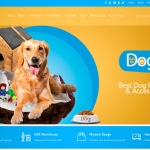Ecommerce Marketing Strategies for Small Business
- October 8, 2024
- Dropshipping

Ecommerce Marketing Strategies for Small Business. As a small business owner, you know how tough it can be to stand out in a crowded online market. With so many competitors vying for attention, it's easy to feel overwhelmed and unsure of where to start. But don't worry, I'm here to help! In this post, I'll share my top ecommerce marketing strategies for small business, designed to help you grow your online presence and drive sales.
Understanding Your Target Audience
Before we dive into the nitty-gritty of ecommerce marketing, it's essential to understand who your target audience is. Who are the people who are most likely to buy from you? What are their pain points, interests, and values? By taking the time to get to know your audience, you'll be able to create content and marketing campaigns that resonate with them, increasing the chances of conversion.
For example, let's say you own a boutique clothing store. Your target audience might be young professionals who value fashion and sustainability. You could create content that showcases your eco-friendly materials, or partner with influencers who share your values.

Ecommerce Marketing Strategies for Small Business
Setting Marketing Goals
Once you have a clear understanding of your target audience, it's time to set some marketing goals. What do you want to achieve with your ecommerce marketing efforts? Do you want to increase website traffic, boost sales, or build brand awareness? By setting specific, measurable, achievable, relevant, and time-bound (SMART) goals, you'll be able to track your progress and make data-driven decisions.
For instance, let's say you want to increase your website traffic by 20% in the next quarter. You could create a content calendar that focuses on SEO-optimized blog posts, or run social media ads targeting your target audience.
Building Your Online Presence
Your online presence is the foundation of your ecommerce marketing strategy. It's where customers will go to learn more about your business, products, and services. So, what does it take to build a strong online presence?
First, you need a professional website that showcases your products and services. Make sure it's mobile-friendly, easy to navigate, and has a clear call-to-action (CTA) to encourage conversions.
Next, you need to build a strong social media presence. This means creating profiles on relevant platforms, posting high-quality content, and engaging with your audience. Don't forget to respond to comments and messages in a timely manner!
Content Marketing
Content marketing is a crucial part of any ecommerce marketing strategy. It's how you'll attract and engage with your target audience, building trust and credibility along the way. So, what types of content should you create?
Blog posts: Write informative, SEO-optimized blog posts that answer your audience's questions and solve their problems.
Videos: Create high-quality videos that showcase your products, services, or company culture.
Social media posts: Share behind-the-scenes content, sneak peeks, and exclusive offers to keep your audience engaged.

Email Marketing
Email marketing is another powerful tool in your ecommerce marketing arsenal. It's how you'll nurture leads, build relationships, and drive conversions. So, how do you get started?
First, you need to build an email list. This means creating a sign-up form on your website, offering incentives like discounts or free resources, and segmenting your list based on demographics, behavior, and preferences.
Next, you need to create effective email campaigns. This means crafting compelling subject lines, writing engaging copy, and including clear CTAs to encourage conversions.
Paid Advertising
Paid advertising is a great way to reach a wider audience and drive conversions. So, what are your options?
Google Ads: Target customers who are searching for keywords related to your business.
Facebook Ads: Target customers based on demographics, interests, behaviors, and more.
Instagram Ads: Target customers who are active on the platform, using hashtags, and engaging with your content.
Social Media Marketing
Social media marketing is all about building relationships and engaging with your audience. So, how do you get started?
First, you need to create a social media content calendar. This means planning and scheduling content in advance, using tools like Hootsuite or Buffer.
Next, you need to engage with your audience. This means responding to comments and messages, using hashtags, and participating in relevant conversations.

Ecommerce Marketing Strategies for Small Business
Influencer Marketing
Influencer marketing is a great way to reach a wider audience and build credibility. So, how do you get started?
First, you need to identify influencers who align with your brand values and target audience. This means researching influencers on social media, using tools like BuzzStream or AspireIQ.
Next, you need to partner with influencers. This means reaching out to influencers, proposing collaborations, and negotiating terms.
Retargeting and Remarketing
Retargeting and remarketing are powerful tools in your ecommerce marketing arsenal. So, how do you get started?
First, you need to set up retargeting ads. This means creating ads that target customers who have visited your website but haven't converted yet.
Next, you need to set up remarketing campaigns. This means creating ads that target customers who have abandoned their carts or haven't converted yet.
Analytics and Reporting
Finally, you need to track your progress and measure your success. This means setting up analytics tools like Google Analytics, tracking key performance indicators (KPIs), and creating reports and dashboards to measure marketing performance.
Conclusion
Ecommerce marketing can be overwhelming, but by following these strategies, you'll be well on your way to growing your online presence and driving sales. Remember to focus on your target audience, set SMART goals, and track your progress. And don't forget to have fun and be creative!












